Tom shows off a nice Reichsbank issued Walther PPK, and gives a little explanation on this RFV variation of pistol made during WWII.
Unique WWII Reichsbank Issued Walther PPK Insight
Hey, welcome back. Today, I'm doing a part of our educational series on Walter PPs. and PPKs. These are all wartime or before the early Walther pre-1946. One of the variations that are not well known is the bank guns. Now, I'll show you some examples and you might ask how do we know it was a bank gun? Excellent question. Let me show you.
Reichsbank Walther Pistols
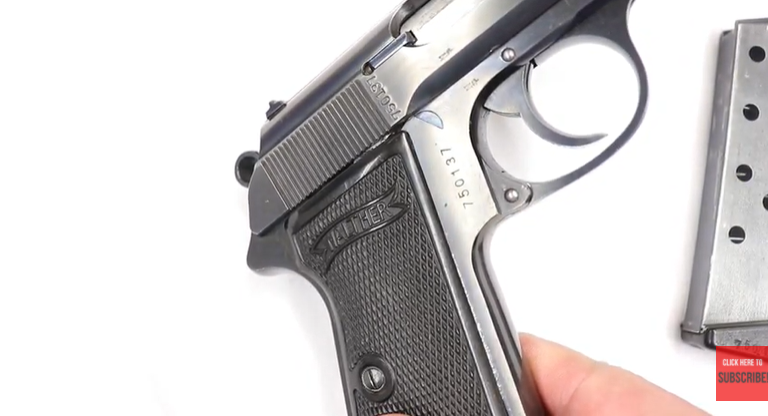
And so, on any PP or PPK, most of them are commercial guns, commercial guns just mean they went to, they were for sale to the public. We do know that officers bought them police officers, army officers, but the ones that were actually issued do a contract to go to the army or to the police, they all had specific characteristics. In a nutshell, let me describe it this way. If you ever see a gun with a numbered magazine, it was a special contract.
A Common Commercial Guns Misnomer
The commercial guns, they never numbered the magazines, and early on, they did not number the slides other than a little scratch on the inside of the slide. Again, we'll cover that later. People write to us all the time; say I'm looking for the numbered mag to my commercial gun. I would say they don't exist. And on the bank guns, they were for some strange reason numbered on the finger extension on the right-hand side of the finger extension.
There's a crudely numbered pattern on the bank guns. That's one of the characteristics. Another, and, you'll see with most of the contracts, and off the top of my head, I'd say every contract I know of Luftwaffe contract, SS contract, actually, some of the police contracts, they also numbered the slides. So, what I would imagine is they would go to the factory and say, we want to buy one hundred PPs and one hundred PPKs. We would like them slide numbered and frame numbered so that when we clean them, they don't get mixed up. And we would like the magazines also numbered. So only on the bank guns. Only the bank guns, they numbered them on the finger extension.
Reichsbank Walther PP Guns

This gun is extremely early. If you look at the serial number, you'll see it is 7 5 O 1 3 7. They started numbering them in 1929 at seven hundred and fifty thousand. So, this gun was the one hundred and thirty-seventh gun coming out of the factory. They had an order from a bank, we don't know which bank. Our belief and now we used to think that these are numbered at the factory but the numbering if you look at the numbering on the slide it's actually pantograph on the slide. So, the bank runs the early bank guns, they would pantograph it on the slide and also a number of the magazines.
But the way they did it, it's so crudely done that we can't imagine that it was done in the factory. So, the current theory is that there's a bank arsenal. They would order the guns from Walther, would go to the arsenal where they would later be numbered on the slide and on the magazine. There's another reason that we believe that to be true. Having to do with the gun was issued before the magazine and they were put together later.
There's a lot of examples of these guns being put together later. So, we believe it was done at the arsenal. There's also precedent for that, for the police arsenal. There were Navy arsenals and we know from other guns that the numbering was done there. So, this is a Walther PP, bank issued. You also notice painted sites. Now, not all painted sites are bank guns, but most of the ones once you see painted sites, you think, aha, and you might look for the pantograph and then also the numbering on the magazine. By the way, this is in 32 calibers. They did make bank guns in 22 calibers. The only contact I know that ordered 22 calibers was the bank gun. There is a theory that sometimes they went they were issued to women. Bank tellers might have been a woman. She didn't like a 32. She'd prefer a 22.
Reichsbank Walther PPK
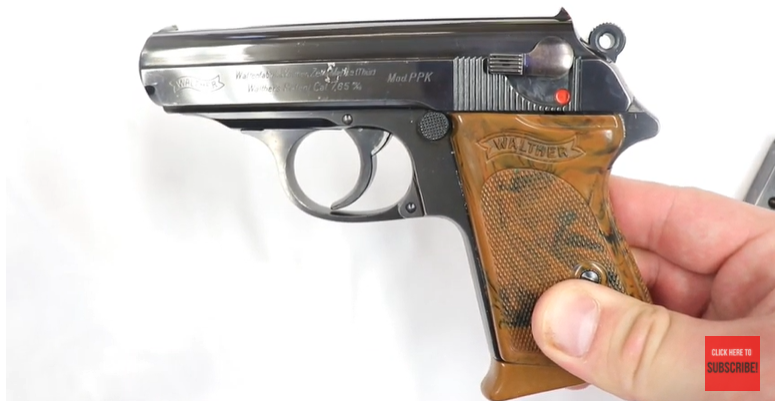
Let's take a look at a similar Walther PPK. Similar in that it's 32 calibers. Aha. Notice the painted sites also pantographed , and in this case, two numbered magazines. So, we quickly realized, OK, this has a similar pattern to the (Walther) PP Therefore, this must be a bank gun.
Confirming the Bank Gun Theory
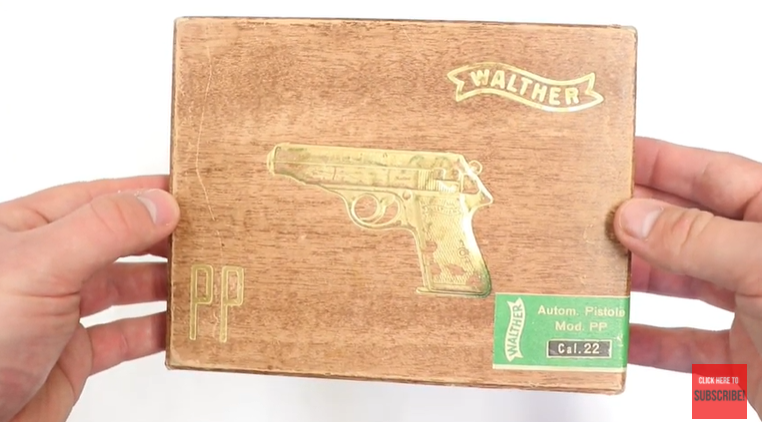
Just to confirm our theory even more. Here is a bank-issued box. And this is the box that every other commercial gun comes in. So, we have a brown box that's numbered in this fashion for a commercial PPK. But on the bank guns, they came in black boxes. They did not come in the regular boxes again this might, it may have been from the factory or it may have been from the arsenal. It tells the bank that it was from. It has the serial number, and when we opened it up to see what treasuries might be lying inside, there's actually a manual for the bank. There's the gun, which is also pantographed.
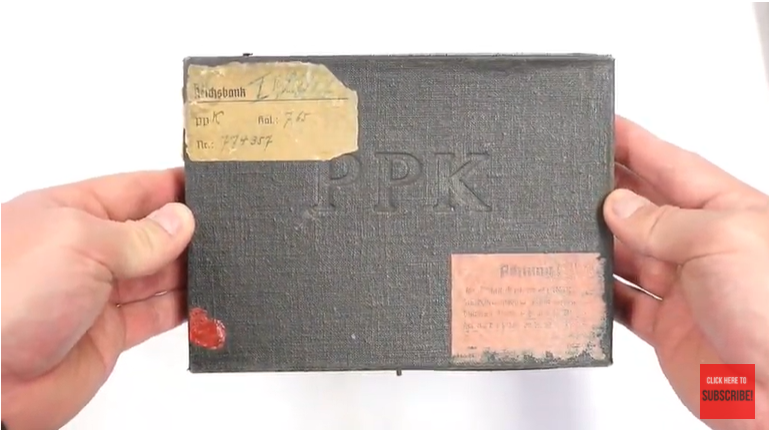
You can also see on this one that it was done after the finish. So, it was probably done after it left the factory, done in the arsenal. It comes with a spare magazine, also with a finger extension, which says Deutsch's Reichsbank German Bank.
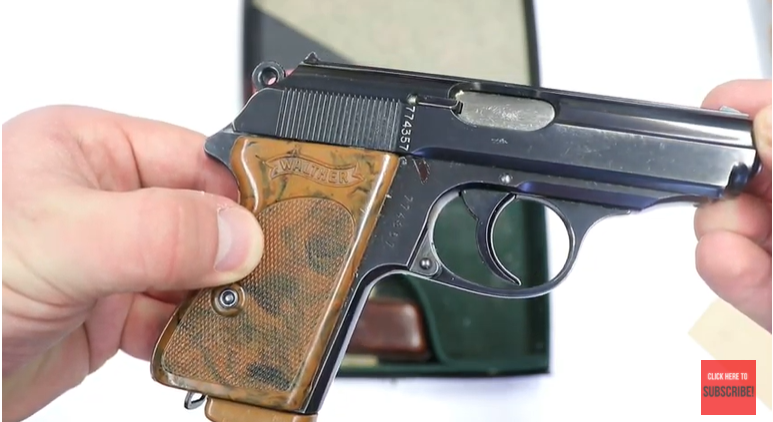
Were Bank Robberies a Problem Pre-Nazis?
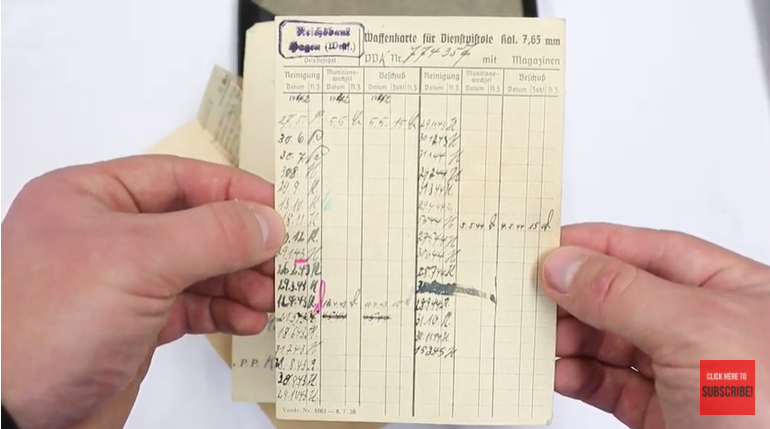
The manual tells us a lot about how these were used. Got memory, I mentioned before, was this really a problem? Bank robberies? Well, the pre-war period, if you watch some of my other videos I've talked about before Hitler came to power, there's a lot of chaos. People were starving in the streets or no jobs.
So just like America had back Bonnie and Clyde and Dillinger, they had bandits back then that would rob banks. Once the Nazis took over, not so much. If they robbed a bank, it was probably an act of treason. They would take you out and shoot you and they might even grab your brother and sister and shoot them, too. So, bank robberies later on in the war, I don't think we're as much of an issue. But in the 1930s, between the wars, it must have been an issue.
Bank Gun Manuals: Unlocking History
Here's how they use them. So, in this manual, which is very cool because it has the original manual, it has the original target. If you buy a smart modern gun, they actually have the test target. They call it its serial number to the gun. But then they also have this little card, and actually they every time they took it, signed it in and signed it out. So, its teller, if somebody wanted to borrow a gun, I imagine they were kept in the safe.
They were not taken home at night. The Nazis were very, very strict about their gun laws. You know, we really had to be registered and approved and you couldn't have a gun in your house, generally speaking. So, this card shows that this gun was signed in and signed out probably by a bank manager or a teller. So it's possible that 22 caliber, the theory that 22 caliber pistols went to female employees and or you could just you could pick, I don't want to be sexist, you could pick either one and the lower calibers might have been favored by some of the men and some of the women.
Reichsbank Holsters Unearthed
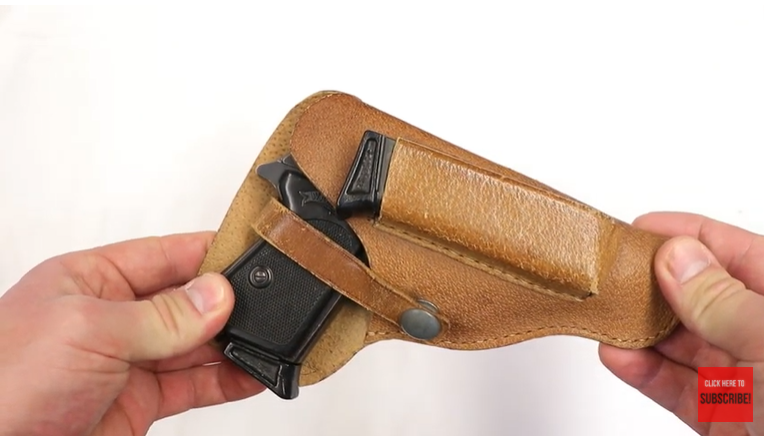
One other thing about the bank guns. People often ask what kind of holster would come with this gun? Well, they often were in desk stores, so often maybe they wouldn't even come with a holster. But this one, in particular, is thought to be this, this is a bank gun that came in a shoulder holster. I don't have the straps from, they were lost in time, but I have seen them before. That strap attaches to the back. It carries a spare magazine and we'd go inside, you know, if you're wearing a suit jacket, it would go over your shoulder and be inside your suit jacket. Same as police detectives. They would use the same usually made by Akah, it would be Akah marked and it would look someone like this.
A Special Story behind this Rare Gun
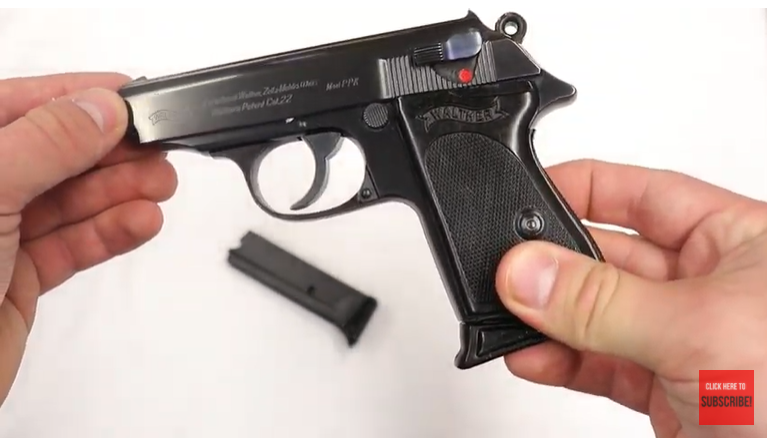
Now, if you would indulge me and just one more story because this is something I learned, actually, I've been collecting guns for 30 years now, collecting Walther PPs and PPKs. And what I heard is that all of the bank guns were early guns, the early 1930s. All of the examples that I ever saw and owned were early guns. But I went out probably about 10 years ago. I went to see a veteran who said he had a collection of Winchesters. He wanted to show them to me. I didn't collect Winchesters while I was at his house, he said. I said, do you have any Walthers? Because, of course, that's what I was most interested in.
I asked to see any one of these he might have. And he pulled out this one. You'll notice from the black grip it's a late war PPK. Actually, this was made and about 1943. The first thing I noticed it had painted sites and I looked at the painted sites and I thought oh that's very unusual. I wonder if he painted the sites, and I said did you mess with this gun or something along those lines. And he said “No, this is exactly how I got the gun.” It is slide number and it has two matching magazines in the style of a bank gun. Never seen one before. So, I called a couple of collector friends. “Hey, is it possible that I found a bank gun from the late war period?” Now, they didn't make on. They were only making them for the military. They didn't have time to make bank guns. So, they just all were pre-war.
I asked the guy, I said, where did you get this gun from? And he said, well, I was an American unit, in the army we were the mop-up crew. The frontline would go through, conquered the town, kill all the bad guys and leave. We would come in and mop up the town, which we would get on the loudspeaker and say, anybody who has a gun in her house, bring it out to the main square. He said we would have a big dump truck in the middle of the square. And he said the people would bring out their guns and throw them in the dump truck. And he said the guy, a guy in a coat and tie came out of the bank with this gun and he threw it. He said he went to throw it in and he said, here, I'll take that one. He said I said it on the edge because he said we would take him outside of town. We would dump them in a big pit and light them on fire. So, we said we took it out to the edge of town. He said just before we dump the truck, I reached in and pulled it out and stuck it in my pocket. He said I carry it with me through the rest of the war and brought it back. So, this is a late war, very unusual because they didn't make very many. But you see the characteristics slide number, not pantograph but it is slide numbered painted sights, and two matching mags. Pretty cool finding, isn't it?
Subscribe to our Youtube Channel to see More!!
Thanks for watching and make sure you like and subscribe to see more.
